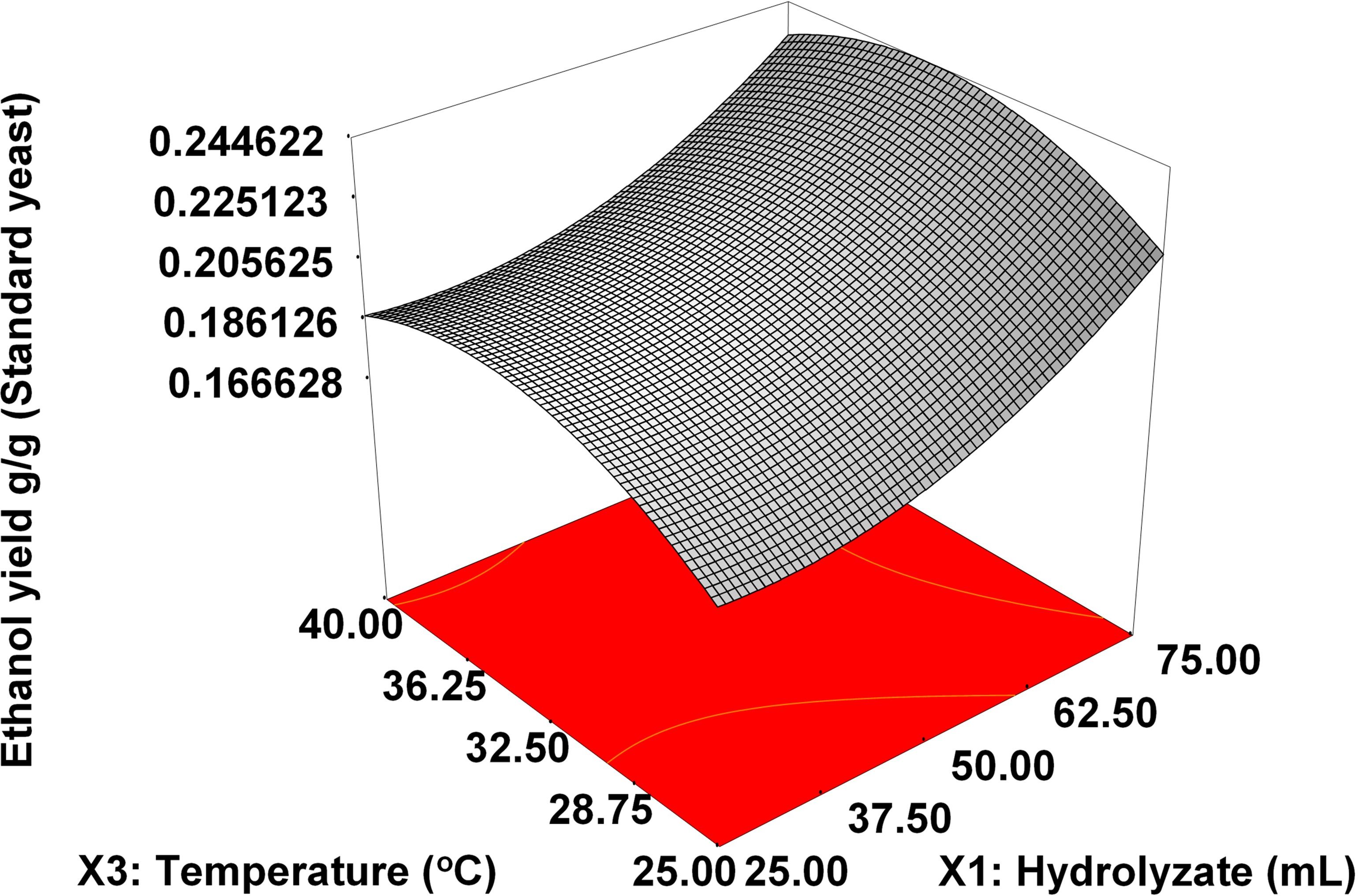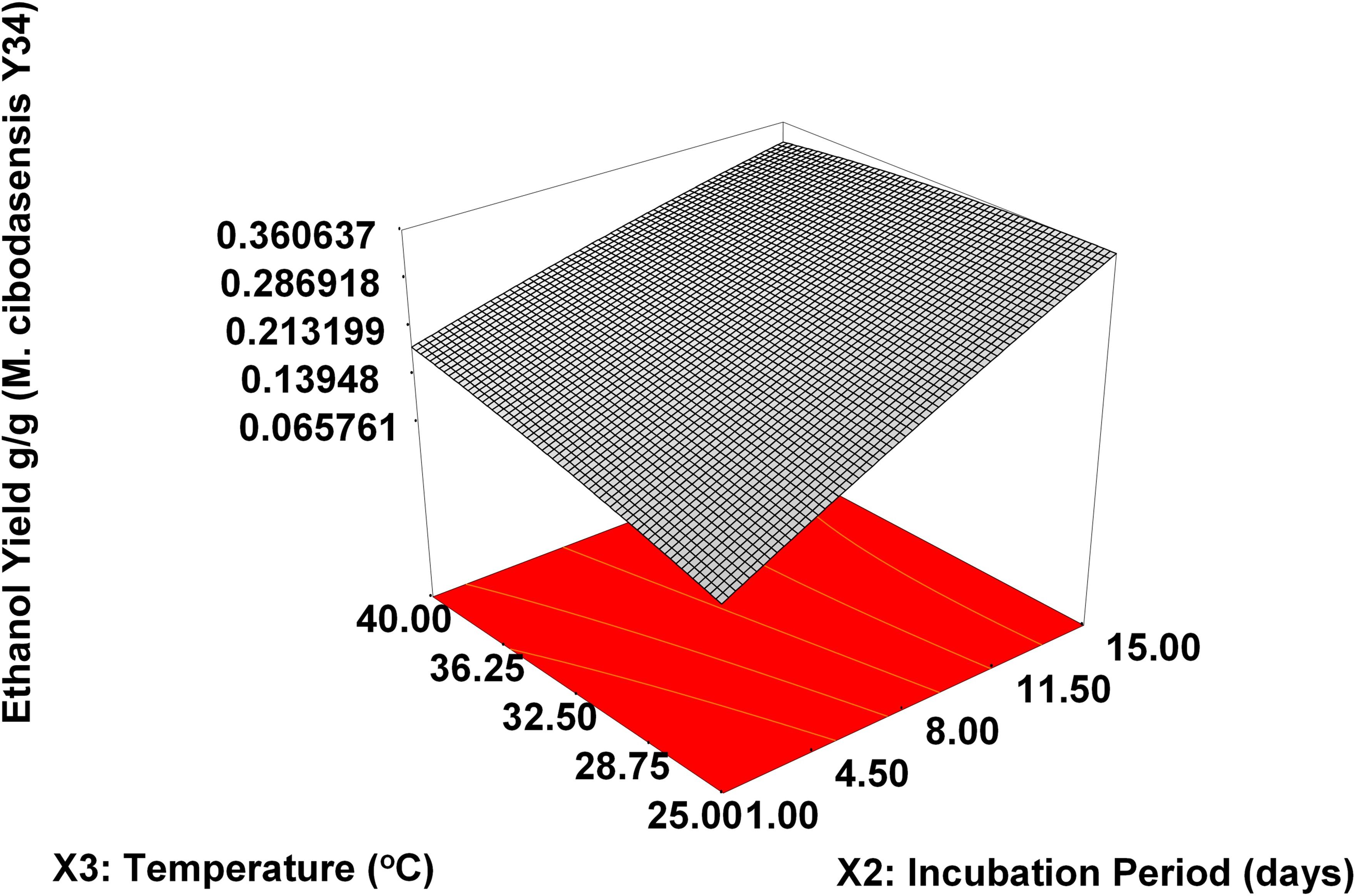Abstract
Today, global focus of research is to explore the solution of energy crisis and environmental pollution. Like other agricultural countries, bulk quantities of watermelon peels (WMP) are disposed-off in environment as waste in Pakistan and appropriate management of this waste is the need of hour to save environment from pollution. The work emphasizes the role of ethanologenic yeasts to utilize significant sugars present in WMP for low-cost bioethanol fermentation. Dilute hydrochloric acid hydrolysis of WMP was carried out on optimized conditions employing RSM (response surface methodology) following central composite design (CCD). This experimental design is based on optimization of ethanologenesis involving some key independent parameters such as WMP hydrolysate and synthetic media ratio (X1), incubation temperature (X2) and incubation temperature (X3) for maximal ethanol yield exploiting standard (Saccharomyces cerevisiae K7) as well as experimental (Metchnikowia cibodasensisY34) yeasts. The results revealed that maximal ethanol yields obtained from S. cerevisiae K7 was 0.36±0.02 g/g of reducing sugars whereas M. cibodasensisY34, yielded 0.40±0.01 g ethanol/g of reducing sugars. The yeast isolate M. cibodasensisY34 appeared as promising ethanologen and embodies prospective potential for fermentative valorization of WMP-to-bioethanol.
Keywords:
ethanologenesis; optimization; fermentation; response surface methodology; biodegradable waste; watermelon peels

 Thumbnail
Thumbnail
 Thumbnail
Thumbnail
 Thumbnail
Thumbnail
 Thumbnail
Thumbnail
 Thumbnail
Thumbnail
 Thumbnail
Thumbnail
 Thumbnail
Thumbnail
 Thumbnail
Thumbnail







